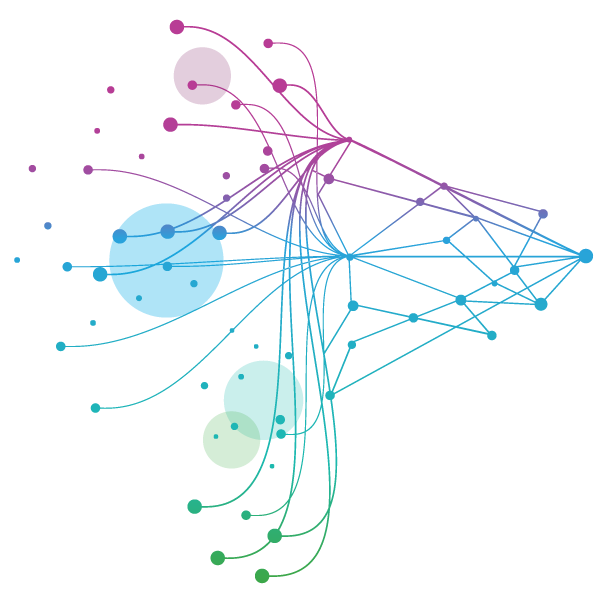

SOLUTIONS
-
Research & Development
-
Real World Evidence
-
Commercialization
-
Safety & Regulatory Compliance
-
Technologies
LIFE SCIENCE SEGMENTS
HEALTHCARE SEGMENTS
- Information Partner Services
- Financial Institutions
- Global Health
- Government
- Patient Associations
- Payers
- Providers
THERAPEUTIC AREAS
- Cardiovascular
- Cell and Gene Therapy
- Central Nervous System
- GI & Hepatology
- Infectious Diseases & Vaccines
- Oncology & Hematology
- Pediatrics
- Rare Diseases
- View All

Obesity
"Advancing obesity and obesity-related trials with patients at the center of development.
LEARN MORE
Harness the power to transform clinical development
Reimagine clinical development by intelligently connecting data, technology, and analytics to optimize your trials. The result? Faster decision making and reduced risk so you can deliver life-changing therapies faster.
Research & Development OverviewResearch & Development Quick Links

Real World Evidence. Real Confidence. Real Results.
Generate and disseminate evidence that answers crucial clinical, regulatory and commercial questions, enabling you to drive smarter decisions and meet your stakeholder needs with confidence.
REAL WORLD EVIDENCE OVERVIEWReal World Evidence Quick Links

See markets more clearly. Opportunities more often.
Elevate commercial models with precision and speed using AI-driven analytics and technology that illuminate hidden insights in data.
COMMERCIALIZATION OVERVIEWCommercialization Quick Links

Service driven. Tech-enabled. Integrated compliance.
Orchestrate your success across the complete compliance lifecycle with best-in-class services and solutions for safety, regulatory, quality and medical information.
COMPLIANCE OVERVIEWSafety & Regulatory Compliance Quick Links

Intelligence that transforms life sciences end-to-end.
When your destination is a healthier world, making intelligent connections between data, technology, and services is your roadmap.
TECHNOLOGIES OVERVIEWTechnology Quick Links
CLINICAL PRODUCTS
COMMERCIAL PRODUCTS
COMPLIANCE, SAFETY, REG PRODUCTS
REAL WORLD PRODUCTS
- Real World & Healthcare Data
- Health Data Apps & AI
- Analytics Research Accelerator
- Expert Ecosystem
- AI Patient & HCP Profiling- Commercial
- AI Patient & Provider Profiling- Med Affairs
- AI Patient & HCP Profiling- Healthcare
- Natural Language Processing
- Market Access Insights
- Direct-to-Patient Research
BLOGS, WHITE PAPERS & CASE STUDIES
Explore our library of insights, thought leadership, and the latest topics & trends in healthcare.
DISCOVER INSIGHTSTHE IQVIA INSTITUTE
An in-depth exploration of the global healthcare ecosystem with timely research, insightful analysis, and scientific expertise.
SEE LATEST REPORTSFEATURED INNOVATIONS
-
IQVIA Connected Intelligence™
-
IQVIA AI
-
IQVIA AI Assistant
-
Human Data Science Cloud
-
IQVIA Innovation Hub
-
Decentralized Trials
-
Patient Experience Solutions
WHO WE ARE
- Our Story
- Our Impact
- Commitment to Global Health
- Code of Conduct
- Sustainability
- Privacy
- Executive Team
NEWS & RESOURCES

Unlock your potential to drive healthcare forward
By making intelligent connections between your needs, our capabilities, and the healthcare ecosystem, we can help you be more agile, accelerate results, and improve patient outcomes.
LEARN MORE
IQVIA AI is Healthcare-grade AI®
Building on a rich history of developing AI for healthcare, IQVIA AI connects the right data, technology, and expertise to address the unique needs of healthcare. It's what we call Healthcare-grade AI.
LEARN MORE
Meet the IQVIA AI Assistant
Your new expert analyst is here. Be at the forefront of data-driven decision-making with a new generative AI tool that enables you to interact with our products and solutions like never before. Get results you can trust, faster.
LEARN MORE
Your healthcare data deserves more than just a cloud.
The IQVIA Human Data Science Cloud is our unique capability designed to enable healthcare-grade analytics, tools, and data management solutions to deliver fit-for-purpose global data at scale.
LEARN MORE
Innovations make an impact when bold ideas meet powerful partnerships
The IQVIA Innovation Hub connects start-ups with the extensive IQVIA network of assets, resources, clients, and partners. Together, we can help lead the future of healthcare with the extensive IQVIA network of assets, resources, clients, and partners.
LEARN MORE
Proven, faster DCT solutions
IQVIA Decentralized Trials deliver purpose-built clinical services and technologies that engage the right patients wherever they are. Our hybrid and fully virtual solutions have been used more than any others.
LEARN MORE
IQVIA Patient Experience Solutions
Empowering patients to personalize their healthcare and connecting them to caregivers has the potential to change the care delivery paradigm.
LEARN MOREIQVIA Careers
Featured Careers
Stay Connected

WE'RE HIRING
"At IQVIA your potential has no limits. We thrive on bold ideas and fearless innovation. Join us in reimagining what’s possible.
VIEW ROLES- Blogs
- Empowering Cardiometabolic Research with OMOP
In the realm of cardiometabolic studies, the Observational Medical Outcomes Partnership (OMOP) Common Data Model (CDM) has emerged as a transformative tool. By standardizing healthcare data from diverse sources, OMOP facilitates large-scale, real-world evidence (RWE) generation, which is crucial for understanding and addressing complex cardiometabolic conditions.
The Power of OMOP in Cardiometabolic Research
OMOP CDM enables researchers to harmonize data from various healthcare databases, making it possible to conduct comprehensive and reproducible studies. This standardization is particularly valuable in cardiometabolic research, where data from different regions and healthcare systems need to be integrated to draw meaningful conclusions.
Case Studies Highlighting OMOP's Impact
- Dual-Agent Anti-Hypertensive Drug: A pharmaceutical company leveraged OMOP to support a bid for a new dual-agent anti-hypertensive drug. By analyzing electronic medical records (EMR) from Germany and France, the study demonstrated the drug's effectiveness in reducing blood pressure, which was crucial for the European Medicines Agency (EMA) resubmission 1.
- Menopausal Women and Vasomotor Symptoms: OMOP was used to characterize menopausal patient populations for a real-world evidence study. The analysis identified thiazide diuretics as the most effective first-line anti-hypertensive drugs compared to ACE inhibitors, leading to a publication in The Lancet 1.
- Adverse Cardiovascular Events Post-Myocardial Infarction: A study using OMOP analyzed data from the US PharMetrics Plus database to identify risk factors for adverse cardiovascular events after a heart attack. The findings complemented ongoing clinical trials and informed future work for the client 1.
- LEGEND Hypertension: OMOP facilitated a large-scale analysis of dual combination therapies for hypertension across multiple databases in the OHDSI network. The study identified thiazide diuretics as the most effective first-line treatment, establishing a framework for future network studies 1.
Benefits of Using OMOP in Cardiometabolic Studies
- Standardization: OMOP CDM standardizes the structure and content of observational data, enabling efficient and reliable analyses.
- Scalability: The model supports large-scale studies by integrating data from multiple sources, enhancing the analytical power.
- Reproducibility: OMOP ensures that studies can be replicated across different datasets, increasing the credibility of the findings.
- Collaboration: The OHDSI network, which leverages OMOP, provides collaborative tools and expertise for conducting extensive research.
Conclusion
The OMOP CDM is revolutionizing cardiometabolic research by providing a robust framework for data standardization and analysis. Its ability to integrate diverse healthcare data sources and generate real-world evidence is invaluable for advancing our understanding of cardiometabolic diseases and improving patient outcomes. As the healthcare landscape continues to evolve, OMOP will undoubtedly play a pivotal role in shaping the future of cardiometabolic research.






